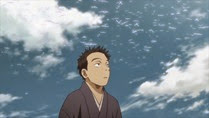 |
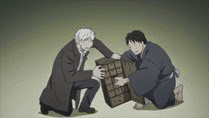 |
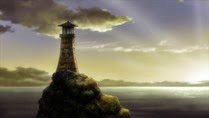 |
There’s an even more elemental quality than usual to Mushishi lately.
If you’ve been an anime fan long enough to remember the first go-around for Mushishi, no one could blame you for feeling a little bit uneasy about the current state of affairs with the series. The final six episodes of the first series were originally cancelled, then shifted to DVD only (Blu-ray was just launching as a consumer product), and finally broadcast several months after the first 20. It sold quite well, but Artland has done very little since and their finances were uncertain when Zoku Shou was announced. No new episode for two weeks our of three does nothing to relieve that uncertainty – production delays were certainly the cause of last week’s “encore” of the special, though whether it was an issue of finances or the production process itself is anyone’s guess. With 18 chapters still planned all we can do is hope for the best.
Watching an episode of Mushishi, then or now, would give you few clues that anything might be amiss – the series is still utterly beautiful, though Artland and Nagahama-sensei have always achieved this mostly through gorgeous backgrounds and a minimalist style (which the manga shares) rather than truckloads of sasuga animation. And it’s a peculiarity of Urushibara Yuki’s manga that Mushishi seems particularly Japanese in both form and content, yet is also undeniably universal – for all that Mushi are in a sense the ultimate Shinto expression, the emotional themes are not at all culture-specific. And as distinctly Japanese as the landscapes are, you wouldn’t have to squint too hard to see an episode like this playing out in Portugal or Chile, or even Polynesia.
Mushi are themselves practically elements – one might almost argue they represent the “element” life, as if it were akin to air or Earth or fire – so it isn’t surprising that there’s an elemental feel to many Mushishi chapters. There’s a Jungian quality to this series, in the archetypes of the collective unconscious sense. But this season seems more literal about it than most – cold, rain, and now wind have been the centerpiece of recent episodes. The young man at the center of “Wind Raiser” is Ibuki (Yosuke Saito, yet another seemingly brand-new seiyuu). He’s a sailor who has a very special ability – with his whistle he can call and even control the Torikaze (“wind birds”), bird-like Mushi (the second ones we’ve seen this year) who bring with them a breeze all their own, obviously useful for a sailing ship at sea.
This is one of those Mushishi stories that wanders off in a direction that’s quite different than how it originally appears. Ginko has bought passage on the vessel on which Ibuki is a greenhorn sailor trying to get hired on full-time, and he’s very impressed with Ibuki’s ability since Mushishi – himself included – can only control Torikaze with a special whistle. Ginko warns Ibuki not to call the Torikaze at night with a very vague “something bad will happen”, but naturally on the first night after Ginko is deposited ashore that’s just what Ibuki does, with disastrous results for the ship. Mysterious holes appear all over the hold, and it sinks – though the crew manages to make it ashore on a lifeboat.
Here’s where things take a dark and unexpected turn, but it doesn’t take us into the realms of the sinister as Mushishi sometimes does. Rather, it turns out that the essence of “Wind Raiser” is really about the dysfunction in Ibuki’s family. The first clue is his mother’s diffident reaction when he shows up at home, almost disappointed that he hasn’t drowned. Something is clearly very wrong here, and it turns out (though it’s never expressly stated, it’s obvious enough) that Ibuki is adopted, and it seems as if his stepmother has always been cold towards him. He initially brings disaster – the Yobiko who bore the holes than sunk his ship and who make his stepmother ill – by accident. Fortunately this village is also the home of Adashino-sensei, who Ginko is visiting to try and sell a few of his trinkets, and the two of them are summoned to treat the stepmother. But when he learns the truth Ibuki calls the Yobiko again, knowing full well what will happen if he does. As is so often the case, the real danger here is not the Mushi but the humans who misuse them.
This isn’t the sort of series that judges its characters, as a general rule – it’s more about showing us their nature and letting us make a decision for ourselves. What Mushi represent as often as anything is temptation – the means for certain people to achieve what they desire through the paranormal. The results can be positive or negative, and always reflect the nature of the person in question – and Ibuki is no different than anyone else in this sense. As is often the case Ginko is in the supporting role here, a kind of spirit guide – he too refrains from casting judgment but makes certain that Ibuki understands the full consequences of his actions. A child treated with coldness and contempt can often become cold and contemptuous himself, and it’s understandable – but it’s as Ginko says, this is a moment where Ibuki needs to choose what sort of man he wants to be. Like Teru in the previous episode, Ibuki makes what’s ultimately an enlightened choice, though it isn’t without consequences. And that fits with the larger tenor of Mushishi, which for all that it glories in revealing the darkness that’s inside of us seems to take a broadly optimistic view on human nature.
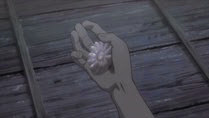 |
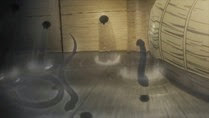 |
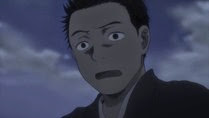 |
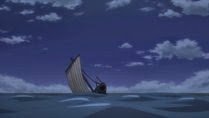 |
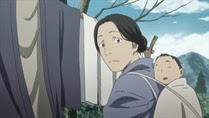 |
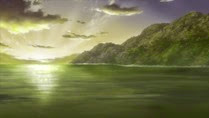 |
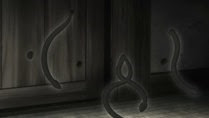 |
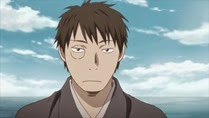 |
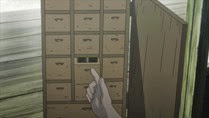 |
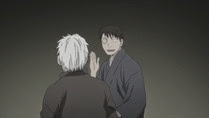 |
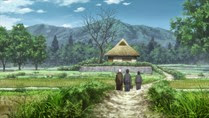 |
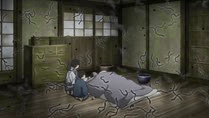 |
 |
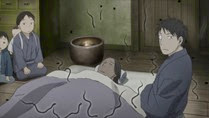 |
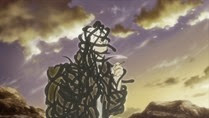 |
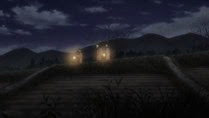 |
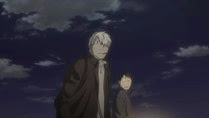 |
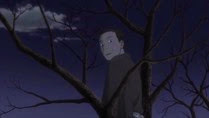 |
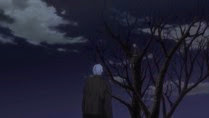 |
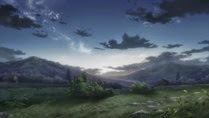 |
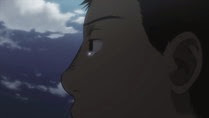 |
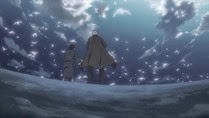 |
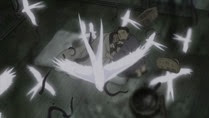 |
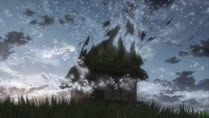 |
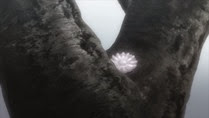 |
 |
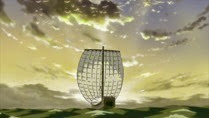 |


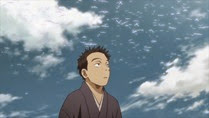

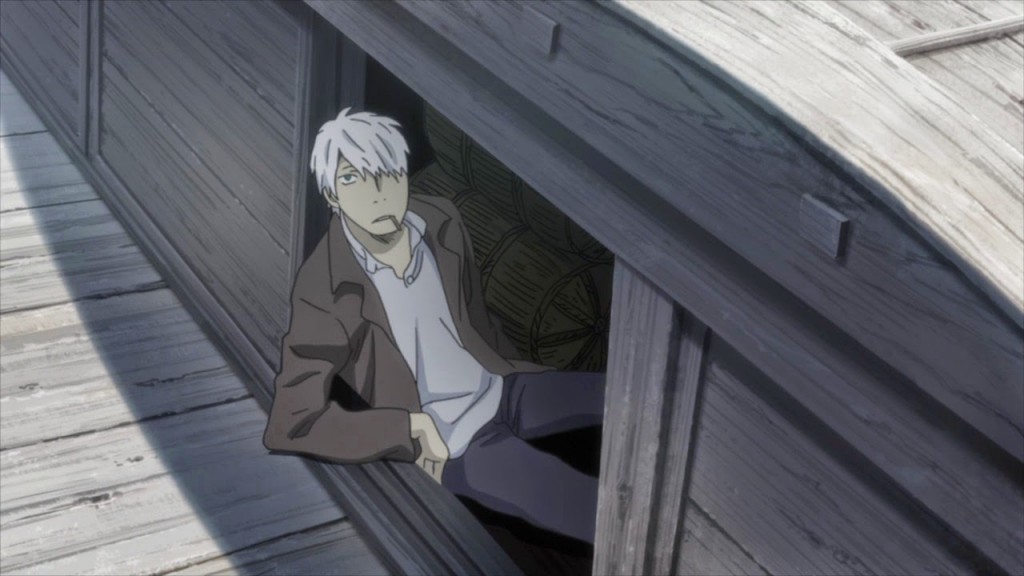
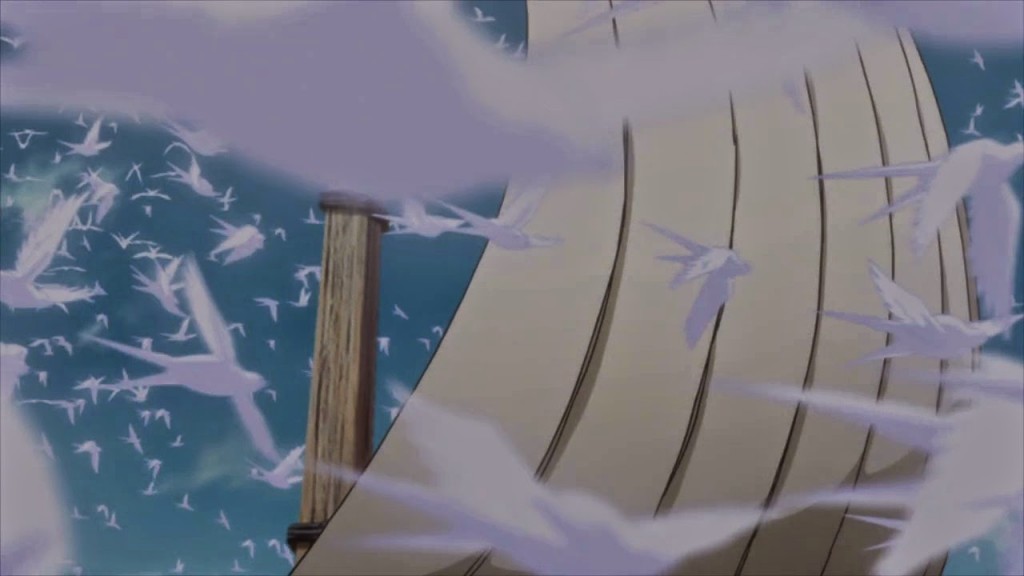
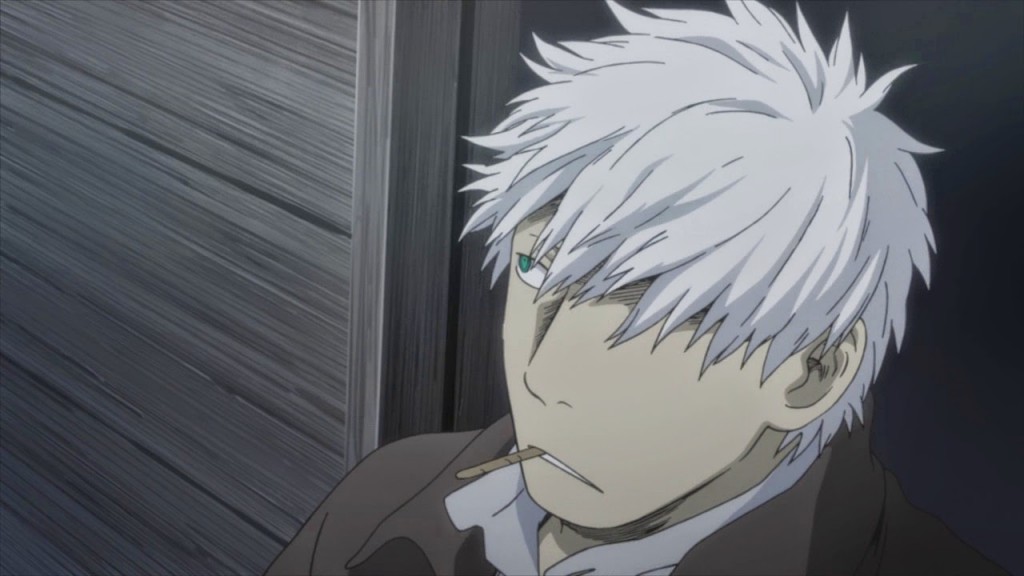
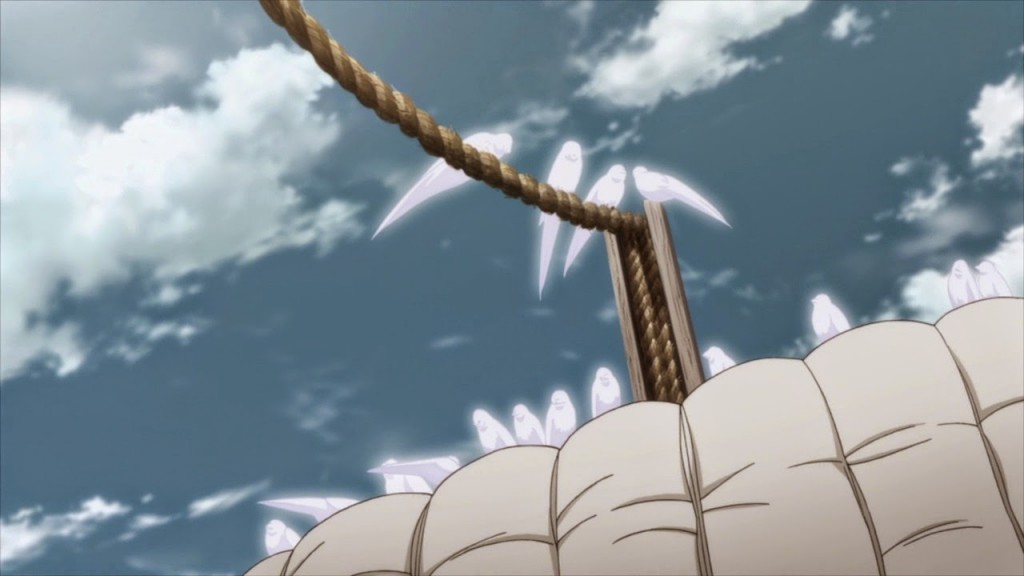
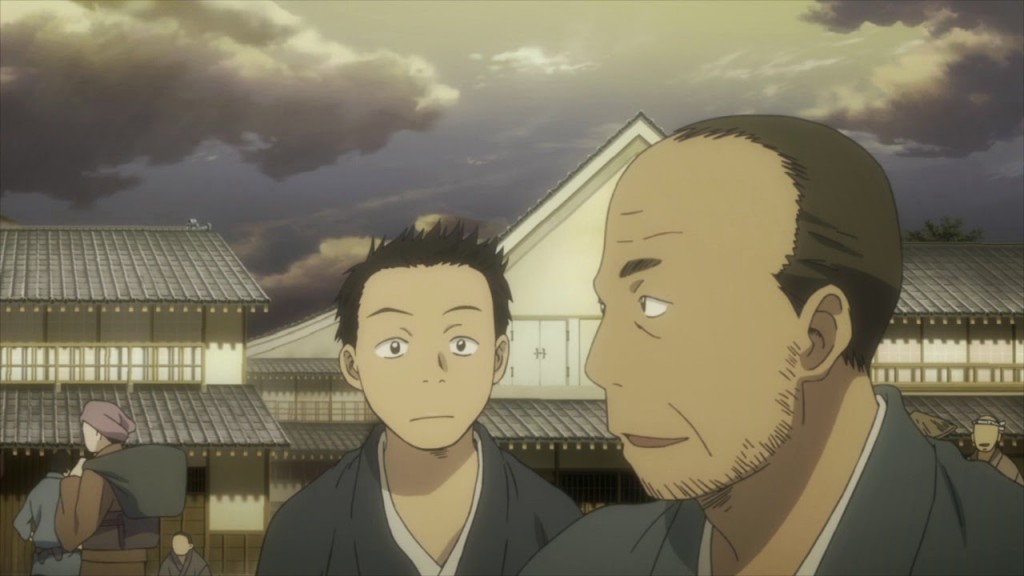
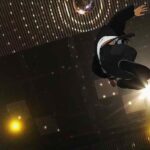

Grumpy Lee
June 7, 2014 at 3:06 pmI'm somehow worried about Artland's every-other-week release of Mushishi episode. It definitely speaks of the production restraints they go through whilst maintaining the visual aesthetics of the series. Luckily enough, the static beauty of the backdrop artwork was never absent and still preserves the overall gorgeousness of the first season. I suppose this sort of miracle happens in the same way Mushishi was roused from its 9 years of slumber.
Adashino-sensei's comical chemistry with Ginko never gets old. I'm glad that he finally gets an appearance this season after the very terrific episode 26. Recurring characters are a rarity in Mushishi, and this actually makes me wonder if we're going to see Tanyuu anytime soon (perhaps in the second cour).
Rita
June 7, 2014 at 7:41 pmVaguely worried but trying desperately to crush the nagging under a metric ton of industrial level denial sums up my view quite nicely.
I love Mushishi to death and back. If there was ever a running for most soul crushingly beautiful and wistful series, this would be the only one in the running as far as I'm concerned (Natsume is a bit too heart warming, so it'd be in the other race). I'm super worried about Artland's states, but I very, VERY much want to just be swept away in the way that Mushishi tends to be able to do, and just forget about all outside influences, so that's what I'm going to do for now.
Mushishi is actually one of the few series where I bought the English release and imported the Japanese version. I just loved it that much. Any support I can give I will.
Ronbb
June 9, 2014 at 2:59 amYes, it's worrisome. The return of Mushi-shi is such a joy but also a surprise that a smaller studio would bet on it in today's otaku-flooded industry. Here's hoping for the best.
This is another wonderful episode. Mushi-shi is never about the mushi but the human heart, soul, and consciousness — and the feelings as expressed so explicitly yet quietly in each episode. It feels so great to be reminded of the first season — Adashino-sensei, the haori with a painting on the inside… I got an urge to re-watch the first season again.
admin
June 9, 2014 at 3:15 amYes, I was really hoping they'd partner with a bigger studio here. The first series did sell pretty well, but the market has changed a lot.
Ronbb
June 9, 2014 at 5:48 amNot that I would like to see Artland go bankrupt, but if they can make it through and produce the remaining episodes, I'd be dancing and singing because Mushi-shi is such a rare beauty that we probably won't see another in eons.
Zeta Zero
June 9, 2014 at 6:28 amSakuga animation.
The bird and snake mushi movements were very fluid. I'm guessing that is probably what held them up.
sonicsenryaku
June 9, 2014 at 6:42 amIm pretty sure the Yobiko where CG rendered; they were just composited well enough into the scenes they were in that is hard to tell. The torikaze for the most part are also CG which are so well done you really couldnt tell the difference